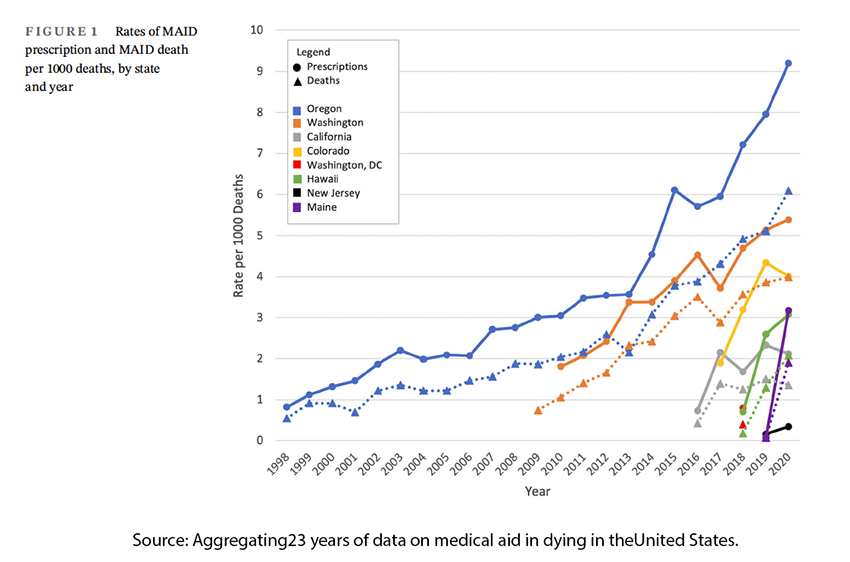The dataset comes from the states with MAID laws on the books – 5329 individuals over 23 years, with another 8451 receiving “prescriptions.”
- Men slightly more than women (53% vs. 47%)
- Overwhelmingly White (95%)
- Median age 72
- 74% with a diagnosis of cancer, followed closely by a neurologic disease (10%)
- 88% informed their family, and 90% died at home (88% were in some form of palliative care)
- Those with a bachelor’s degree or higher were over-represented, roughly double their percentage in the US population (Based on current Census figures)
To provide some context, based on CDC data, all-cause deaths in these populations are roughly 5,000 per 100,000. This would mean that in a comparable population, 600 individuals in Oregon (the highest state) utilized MAID to end their lives in 2019 – the state with the steepest rise when 200 individuals chose MAID.
As with an increasing number of research reports, the authors point to disparities in using MAID. Given that MAID results in death, the researchers do “tiptoe” past suggesting a role of systemic racism, which in this instance might also be called “genocide.” Last word to them.
“It is unclear whether these apparent differences result from patient preferences or systemic bias; it is plausible that MAID laws, regulations, and clinical processes have been established that unintentionally make it more difficult for patients with less education, from minority backgrounds, or from non-cancer diagnoses to participate. Navigating MAID policies and finding MAID providers may be particularly challenging for individuals with limited resources and high symptom burdens towards the end of life. Most MAID requesters must pay for MAID prescriptions out-of-pocket, as Medicare and other federal health insurance programs do not cover aid in dying costs. These out-of-pocket costs have risen dramatically….”
Source: Aggregating 23 years of data on medical aid in dying in the United States. Journal of American Geriatric Society. DOI:10.1111/jgs.179254





